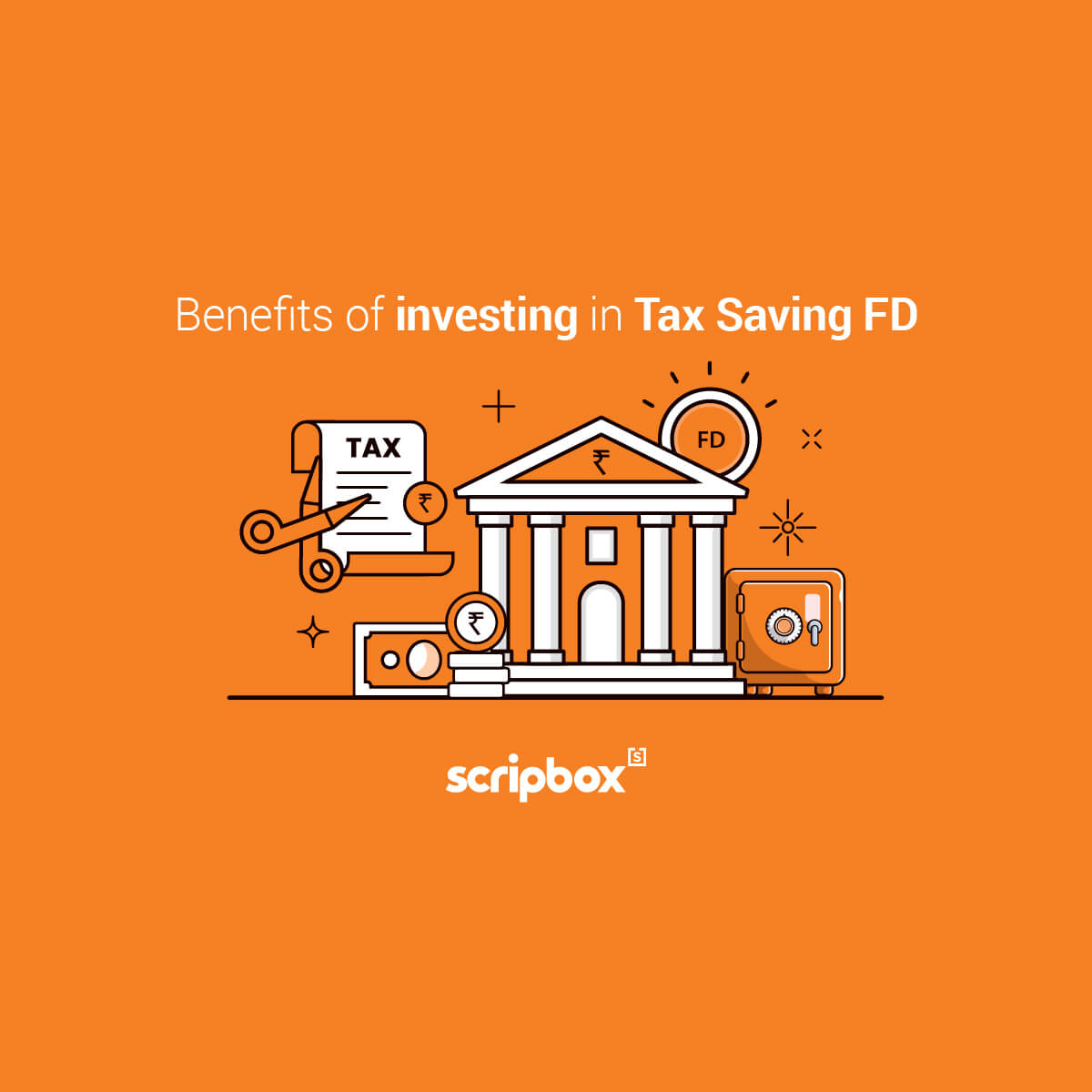Generally, investors look for safety, returns and tax-efficient investment options. Also, considering these they wish to meet their financial goals. To meet these purposes, there are different savings schemes available for investors. In this article, we will discuss National Savings Certificate (NSC) and Tax Savings fixed deposit (FD). Both the schemes provide safety of capital and guaranteed interest payments over the tenure of the scheme. To know more, read our complete guide on NSC vs FD, which is a suitable investment option based on financial needs.
What is National Savings Certificate (NSC)?
National Savings Certificate (NSC) is a fixed income post office savings scheme. It is offered by the government of India. One has to visit the post office to activate this scheme. The minimum amount to invest in this scheme is INR 100. However, there is no upper limit as one can invest any amount in this scheme. The scheme comes with a lock-in period of 5 years where one cannot extend the certificate beyond this tenure. Thus, to extend the scheme beyond 5 years, individuals have to purchase a fresh certificate at the end of the tenure at the prevailing interest rates.
The interest rate in this scheme remains fixed throughout the tenure. The current interest rate for an NSC is 6.8% p.a which is payable on maturity. The interest for NSC has compounded annually. Also, the principal amount and the interest accrued qualifies for an 80C deduction. However, one has to keep in mind that the maximum benefit available is Rs.1.5 lakh under Section 80C of the Income Tax Act, 1961.
To calculate the potential returns from a National Savings Certificate, one can use an NSC calculator. The NSC calculator is available online and is free to use.
Only individuals who are residents of India can invest in NSC. Non-Resident Indians (NRIs) cannot open a new NSC. However, they can continue to hold their existing NSC until maturity.
Advantages and Limitations of Investing in NSC
Advantages
The following are the advantages of investing in NSC
- The investment amount and interest earned are exempted from tax under Section 80C of the Income Tax Act, 1961.
- The minimum amount to invest is INR 100 whereas there is no upper limit on the investment amount.
- The interest earned on NSC is compounded annually, yielding higher returns. Further, it offers fixed returns over the tenure of investment.
- One can take NSC on behalf of the minor. It can also be used as collateral for securing loans from banks.
- Since the government backs this instrument, it is a low risk investment option.
- It is easily available in all post offices. One can invest in NSC from any post office on the submission of required KYC documents.
Limitations
The following are the limitations of investing in NSC
- There is no reinvestment option in NSC. One has to purchase a new certificate at the end of the tenure if they wish to continue with this scheme.
- Since this instrument offers fixed interest rates, sometimes the real returns may fall below inflation.
- The online facility to purchase NSC is still not available at many post offices and national banks.
What is a Fixed Deposit?
A fixed deposit is a financial instrument where the investor can invest a lump sum amount with a bank at a fixed interest rate for a specified period of time. One can invest the amount from 7 days up to 10 years. Upon maturity, the investor will receive the amount that was invested along with the interest.
There are different types of fixed deposits available for investors to choose from. One among them is tax saving fixed deposit which offers tax deduction under Section 80C of the Income Tax Act,1961. The quantum of the deduction depends on the investment made. Therefore, investors can save tax up to a maximum of Rs. 1,50,000 by investing in a tax saving FD. However, the tax-saving FD comes with a lock-in period of 5 years. Also, the interest earned on FD is taxable as per the applicable income tax slab rate.
To calculate the potential returns from this tax saving fixed deposit, one can use Scripbox’s fixed deposit calculator. The fixed deposit calculator is available online and is free to use.
One can easily invest in a tax saving FD online or offline mode through the bank. Moreover, these FDs do not have a premature withdrawal facility. Also, investors cannot take a loan against a fixed deposit account.
Advantages and Limitations of Investing in FD
Advantages
The following are the advantages of investing in FD
- The tax saving FD schemes are easily available in all public and private sector banks. Thus, one can open an FD account through internet banking as well.
- Fixed deposits offer better returns than savings accounts. Also, they offer guaranteed returns over the investment period.
- Investment in tax saving FD comes with a lock in period of 5 years. Thus, it offers tax exemption up to Rs. 1.5 lakhs under Section 80C.
- FDs can be renewed automatically. One need not visit the bank for its renewal.
- One can open any number of FDs at multiple banks. Thus, these schemes are a great way to save money for a specified duration.
Limitations
The following are the limitations of investing in FD
- The interest earned on fixed deposits is taxable as per the individual’s income tax slab rate.
- Further, the interest accrued on tax saving FD is subject to a TDS of 10% if the interest income exceeds INR 40,000 (INR 50,000 for senior citizens).
- This scheme offers fixed interest rates. Hence, sometimes the real returns may fall below inflation when the inflation rises.
Difference Between NSC and FD
The following table shows some of the major differences between NSC and FD
| Parameter | NSC | Tax Saving FD |
| Liquidity | NSC can be used as collateral against loans. | This type of FD cannot be used as collateral for a loan. |
| Interest Rate | 6.8% | The interest rate varies depending on the bank which may range between 6% – 8%. |
| Compounding Frequency | The interest earned is compounded annually. | The interest for FD is generally compounded quarterly. |
| TDS | It is not applicable. | TDS is deducted at 10% on the interest earned. |
Compare NSC vs FD
Now let us understand the differences of the two savings schemes separately in detail under various parameters –
Tenure
The tenure of both instruments i.e NSC and FD is the same as 5 years. Therefore, investors can choose any in terms of tenure of investment.
Interest Rate
The government of India fixes the interest rate on NSC from time to time. The current interest for NSC is 6.8% compounded annually. This rate may or may not be higher than the bank rates. It completely depends on the bank the investor is comparing with as the bank rates on FD can go up to 7%. Also, banks offer a higher interest rate to senior citizens. Furthermore, the interest on FD is compounded quarterly. Therefore, on paper, the FD earnings can be more but that is before taxes.
Investment Amount
For NSCs, one can invest a minimum amount of Rs. 100 and there is no upper limit on the maximum amount. Thus, it can be suitable for any investor as it allows small investments and qualifies for a tax deduction.
For FDs, the minimum and maximum amount of investment vary depending on the bank. However, one can avail a maximum benefit of Rs. 1.5 lakh for tax deduction under this scheme.
Tax Benefit
The interest earned on NSC and tax saving FDs is taxable in the hands of the investor under the heading ‘Income from Other Sources.’ However, the interest earned on NSC is not paid out to the investor. Instead, it is reinvested and this interest amount is eligible for tax benefit under section 80C. To avail the benefit of interest on NSC, the investor has to first show the interest accrued under Income from other sources and then claim tax deduction under Section 80C within the limit of Rs. 1.5 lakh.
In case cumulative FDs (like tax saving FD), the interest earned and reinvested is not eligible for tax benefit under Section 80C.
TDS Deduction
No TDS is deducted for interest earned on NSC. However, it is deducted for interest earned on tax saving FDs. It is deducted at 10% if the interest income exceeds INR 40,000 (INR 50,000 for senior citizens).
Premature Withdrawal
Early withdrawals in both schemes are subject to penalty. One can withdraw from NSC before maturity only under specific conditions like –
- The demise of the certificate holder
- On the forfeiture of certificate by the gazetted officer
- On order from a court of law
Withdrawal from both schemes will not fetch any interest. Investors are liable to a penalty on premature withdrawal.
Risk
NSC is a small savings scheme where the government backs it, thus, not having any risk. The risk in a tax-saving fixed deposit is also very minimal as it comes under well-reputed banks. However, one cannot say that risk does not exist. Therefore, one should always remember that fixed deposits up to Rs. 5 lakhs is insured by the Deposit Insurance and Credit Guarantee Corporation (DICGC).
What to Choose Between NSC and FD?
Both the instruments, NSC and FD have their advantages and limitations. NSC has an additional advantage over fixed deposits which are lower risks and higher interest rates. The reason is, TDS is deducted on the interest earned on FDs. Even though FD provides a marginally higher interest rate, due to TDS deduction, the post tax returns may be lower. Therefore, while comparing these two tax saving instruments, one must compare the interest yielded on maturity on FD and NSC and not just the rate of interest.
If the investor is a senior citizen and their income is below the taxable limit, then they can avail a higher interest rate (banks provide preferential interest rates for senior citizens). Also, they can submit Form 15H or 15G to avoid TDS deduction. Therefore, when one submits these forms to avoid TDS, then these two saving instruments will be on par upon maturity. In addition, one has to look at other factors discussed above like interest rate, compounding frequency, etc.
As an investor, one has to consider all the factors when choosing the correct investment instrument. Furthermore, one should remember that the interest earned on NSC and FD will get accrued and not paid out. Therefore, one should consider investing in these schemes only if they do not want a regular income.
On a broader outline, NSC can be chosen for long term goals like retirement benefits during old age as they are illiquid. On the other hand, FDs can be handy in terms of liquidity as one can break the FD whenever they need money. Hence, one should choose an investment instrument based on their financial objectives, investment horizon and risk tolerance levels.
Explore Best Bank in India 2025





















Show comments